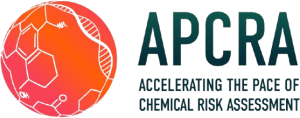Katie Paul Friedman
,
Russell S Thomas
,
John F Wambaugh
,
Joshua A Harrill
,
Richard S Judson
,
Timothy J Shafer
,
Antony J Williams
,
Jia-Ying Joey Lee
,
Lit-Hsin Loo
,
Matthew Gagne
,
Alexandra S Long
,
Tara S Barton-Maclaren
,
Maurice Whelan
,
Mounir Bouhifd
,
Mike Rasenberg
,
Ulla Simanainen
,
Tomasz Sobanski
Integration of new approach methods for the assessment of data-poor chemicals
Toxicological Sciences, Volume 205, Issue 1, May 2025, Pages 74–105, https://doi.org/10.1093/toxsci/kfaf019 Abstract: The use of new approach methods (NAMs), including high-throughput, in vitro bioactivity data, in setting a point-of-departure (POD) will accelerate the pace of human health hazard assessments. Combining hazard and exposure predictions into a bioactivity:exposure ratio (BER) for use in risk-based prioritization and…
Marc A Beal
,
Marc Audebert
,
Tara Barton-Maclaren
,
Hannah Battaion
,
Jeffrey C Bemis
,
Xuefei Cao
,
Connie Chen
,
Stephen D Dertinger
,
Roland Froetschl
,
Xiaoqing Guo
,
George Johnson
,
Giel Hendriks
,
Francesco Cubadda
,
Laure Khoury
,
Alexandra S Long
,
Stefan Pfuhler
,
Raja S Settivari
,
Shamika Wickramasuriya
,
Paul White
Quantitative in vitro to in vivo extrapolation of genotoxicity data provides protective estimates of in vivo dose
Environ Mol Mutagen. 2023 Feb;64(2):105-122. doi: 10.1002/em.22521. Epub 2022 Dec 22. Abstract: Genotoxicity assessment is a critical component in the development and evaluation of chemicals. Traditional genotoxicity assays (i.e., mutagenicity, clastogenicity, and aneugenicity) have been limited to dichotomous hazard classification, while other toxicity endpoints are assessed through quantitative determination of points-of-departures (PODs) for setting exposure limits. The more…
Anthony J F Reardon
,
Andrea Rowan-Carroll
,
Stephen S Ferguson
,
Karen Leingartner
,
Remi Gagné
,
Byron Kuo
,
Andrew Williams
,
Luigi Lorusso
,
Julie A Bourdon-Lacombe
,
Richard Carrier
,
Ivy Moffat
,
Carole L Yauk
,
Ella Atlas
Potency Ranking of Per- and Polyfluoroalkyl Substances Using High-Throughput Transcriptomic Analysis of Human Liver Spheroids
Toxicological Sciences, Volume 184, Issue 1, October 2021, Pages 154–169 Abstract: Per- and polyfluoroalkyl substances (PFAS) are some of the most prominent organic contaminants in human blood. Although the toxicological implications of human exposure to perfluorooctane sulfonate (PFOS) and perfluorooctanoate (PFOA) are well established, data on lesser-understood PFAS are limited. New approach methodologies (NAMs) that…
Olimpia Vincentini
,
Anne-Louise Blier
,
Alessia Bogni
,
Morgane Brun
,
Serena Cecchetti
,
Francesca De Battistis
,
Sylvain Denis
,
Lucie Etienne-Mesmin
,
Francesca Ferraris
,
Francesco Sirio Fumagalli
,
Kevin Hogeveen
,
Francesca Iacoponi
,
Andrea Raggi
,
Lisa Siciliani
,
Deborah Stanco
,
Eveline Verleysen
,
Valerie Fessard
,
Jan Mast
,
Stephanie Blanquet-Diot
,
Susanne Bremer-Hoffmann
,
Francesco Cubadda
EFSA Project on the use of New Approach Methodologies (NAMs) for the hazard assessment of nanofibres. Lot 1, nanocellulose oral exposure: gastrointestinal digestion, nanofibres uptake and local effects
EFSA Journal, Published 20 September 2023; https://doi.org/10.2903/sp.efsa.2023.EN-8258 Abstract: Nanocellulose (NC) is an emerging material in the food sector with several prospective application areas. Three main types of NC exist, i.e. bacterial NC (BNC), nanofibrillated cellulose (NFC), and cellulose nanocrystals (CNC). The biological sources and processing conditions affect several physicochemical parameters of NC. In the present project,…
Daniel L Villeneuve
,
Michelle Le
,
Monique Hazemi
,
Adam Biales
,
David C Bencic
,
Kendra Bush
,
Robert Flick
,
John Martinson
,
Mackenzie Morshead
,
Kelvin Santana Rodriguez
,
Kelsey Vitense
,
Kevin Flynn
Pilot testing and optimization of a larval fathead minnow high throughput transcriptomics assay
Current Research in Toxicology; https://pubmed.ncbi.nlm.nih.gov/36619288/ Abstract: Concentrations at which global gene expression profiles in cells or animals exposed to a test substance start to differ significantly from those of controls have been proposed as an alternative point of departure for use in screening level hazard assessment. The present study describes pilot testing of a high throughput…
Kristin K. Isaacs
,
Peter Egeghy
,
Kathie L. Dionisio
,
Katherine A. Phillips
,
Angelika Zidek
,
Caroline Ring
,
Jon R. Sobus
,
Elin M. Ulrich
,
Barbara A. Wetmore
,
Antony J. Williams
,
John F. Wambaugh
The chemical landscape of high-throughput new approach methodologies for exposure
Journal of Exposure Science & Environmental Epidemiology; https://doi.org/10.1038/s41370-022-00496-9 Abstract: The rapid characterization of risk to humans and ecosystems from exogenous chemicals requires information on both hazard and exposure. The U.S. Environmental Protection Agency’s ToxCast program and the interagency Tox21 initiative have screened thousands of chemicals in various high-throughput (HT) assay systems for in vitro bioactivity. EPA’s…
Yadvinder Bhuller
,
Deborah Ramsingh
,
Marc Beal
,
Sunil Kulkarni
,
Matthew Gagne
,
Tara S Barton-Maclaren
Canadian Regulatory Perspective on Next Generation Risk Assessments for Pest Control Products and Industrial Chemicals
Front. Toxicol., 04 November 2021 | https://doi.org/10.3389/ftox.2021.748406 Abstract: In 2012, the Council of Canadian Academies published the expert panel on integrated testing of pesticide’s report titled: Integrating emerging technologies into chemical safety assessment. This report was prepared for the Government of Canada in response to a request from the Minister of Health and on behalf…
Andrea Rowan-Carroll
,
Anthony Reardon
,
Karen Leingartner
,
Remi Gagné
,
Andrew Williams
,
Matthew J Meier
,
Byron Kuo
,
Julie Bourdon-Lacombe
,
Ivy Moffat
,
Richard Carrier
,
Andy Nong
,
Luigi Lorusso
,
Stephen S Ferguson
,
Ella Atlas
,
Carole Yauk
High-Throughput Transcriptomic Analysis of Human Primary Hepatocyte Spheroids Exposed to Per- and Polyfluoroalkyl Substances as a Platform for Relative Potency Characterization
Toxicological Sciences, Volume 181, Issue 2, June 2021, Pages 199–214 Abstract: Per- and poly-fluoroalkyl substances (PFAS) are widely found in the environment because of their extensive use and persistence. Although several PFAS are well studied, most lack toxicity data to inform human health hazard and risk assessment. This study focused on 4 model PFAS: perfluorooctanoic…
